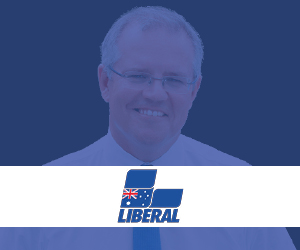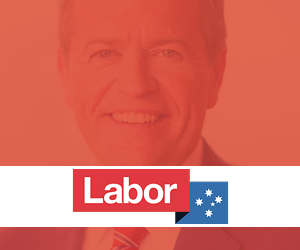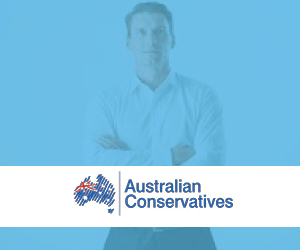Housing and Welfare
Key Issues
From 2009 to 2016, growth in the size of the social housing stock stagnated and numbers on waiting lists increased. According to 2016 COAG Report on Performance, three out of four benchmarks set by the National Affordable Housing Agreement had not been achieved, despite the government providing the states with more than $9 billion since 2009.
The only benchmark on track to be achieved was:
- 20 per cent reduction in proportion of Indigenous households living in overcrowded conditions: 16 per cent decrease in the proportion between 2008 and 2012-13.
The other benchmarks went the other way.
- 10 per cent reduction in the proportion of low-income renter households experiencing rental stress: no evidence that progress has been made. Instead, this increased from 35.4 per cent in 2007-08 to 42.5 per cent in 2013-14 (up 7.1 per cent);
- 7 per cent reduction in number of homeless from 2006 to 2013: increase from just under 90,000 in 2006 to over 105,000 in 2011, a 17.3 per cent increase;
- 10 per cent increase in proportion of Indigenous Australians who own their own home from 2008 to 2017-18: no evidence of any increase since 2008;
Party Platforms

The Liberal Party opposes Labor’s plan to phase out negative gearing, believing the tax break supports the supply of rental housing, placing downward pressure on rents. It says Labor’s plan to abolish negative gearing will increase rents.
To help create more housing supply, the Liberal Party will:
- Replace the National Affordable Housing Agreement that provides $1.5 billion every year to the States and Territories, with a new set of agreements, requiring them to deliver on housing supply targets.
- Establish a $1 billion National Housing Infrastructure Facility, to provide finance for infrastructure to unlock new housing supply.
- Establish a new National Housing Finance and Investment Corporation to provide long-term, low-cost finance to support more affordable housing.
- Allow Managed Investment Trusts to be used to develop and own affordable housing.
- Provide investors in affordable housing with greater income certainty by enabling direct deduction of welfare payments from tenants, and increasing the capital gains tax discount to 60 per cent for investments in affordable housing.
First home buyers can get a tax cut on their home deposit savings by salary sacrificing into their superannuation account (over and above their compulsory superannuation contribution).
Up to $30,000 per person (and $15,000 per year) in home deposit savings now get the benefits of superannuation – that is, taxed at 15 per cent, rather than marginal rates, and withdrawals taxed at their marginal rate, less 30 percentage points.
Over-65s can now make a non-concessional contribution of up to $300,000 into their superannuation fund from the proceeds of the sale of their principal home. Providing this financial benefit for older Australians who want to downsize will help to free up housing for those who are looking for a larger home for a family.

Labor promises to increase the amount of affordable rental properties by building 250,000 new affordable homes, with at least 20,000 in Labor’s first term. The aim is for:
- Lower income families to be assisted to create stable homes;
- Housing to be available to those at risk of falling through the gap, for example for women who have been the victims of family violence or older women who are at risk of homelessness.
- Building on the National Rental Affordability Scheme, Labor’s program will provide annual incentives of $8500 a year for 15 years for newly constructed properties that are owned or managed by a registered community housing provider, which will be mandated to provide 20 per cent below market rent for eligible Australian tenants on low and middle incomes. The incentive will be indexed annually to the rent component of the CPI.
- Labor will work with the re-established National Housing Supply Council to identify the number, type and general location of dwellings which would be eligible to receive incentives.

In its May 2018 policy, the Australian Greens declared support for:
- A national housing affordability plan.
- To reduce the impacts of negative gearing on housing affordability.
- Government housing assistance for Australians who are unable to provide their own housing.
- Urgent and sufficient funding to reduce current waiting lists for public and community housing.
- Improved legal rights and standards for renters including security of tenure, and reduced discrimination.
- More emergency accommodation and transitional housing for people in need (including women and children affected by family violence, people experiencing homelessness, refugees and asylum seekers, migrants and people released from detention) with sufficient exit options to long-term housing.
- First Nations people to have access to adequate, secure, well-maintained, safe and culturally appropriate long-term housing, wherever they live.

No specific policy on housing but a general statement in support of families: “The traditional family is the foundation stone of civil society. We commit to supporting families by defending the traditional definition of marriage and easing the cost of living pressures on families through tax and transfer payments reform.”
Christian Commentary
Federal and state government are failing to provide secure, affordable housing, according to Anglicare Australia’s Rental Affordability Snapshot, which surveyed more than 67,000 rental listings across Australia.
According to the shapshot, released in April 2018, there was a chronic shortage of affordable rentals nationwide.
- Only 485 rentals were affordable for a single person on the Disability Support Pension
- 180 rentals were affordable for a single person with one child on Newstart.
- 3 rentals were affordable for a single person on Newstart
- 2 rentals were affordable for a single person in a property or share house on Youth Allowance.
- 0 rentals were affordable for a single person on Newstart or Youth Allowance in Sydney, Canberra, Melbourne, Adelaide, Darwin or Perth.
Anglicare Australia executive director Kasy Chambers said the rental crisis was getting worse, with almost all major cities unaffordable for people on low incomes.
“Our system is rigged against renters. The tax system is driving up the cost of rent for millions of Australia,” she says.
Anglicare has called for urgent investment in affordable rentals for people in need and a national plan to make renting fair for people who may never own their own home.











